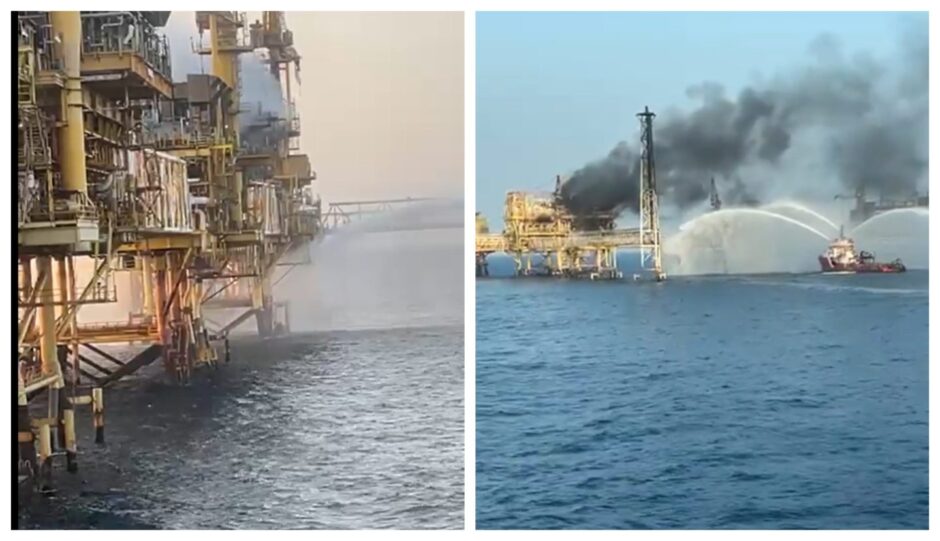
It’s so blindingly obvious, workers, communities and the environment are seriously threatened by industrial accidents.
And those who choose oil & gas by and large know perfectly well that they are working in an industry that is both dangerous and environmentally discredited.
The pay can be good by local standards and apparently worth the risk of living with bad bosses, unsafe working practices, a corporate hire and fire mentality and living conditions akin to the workhouse.
Of course there are excellent companies out there, notably the core European brands, but even they are not as squeaky clean as claimed. But I fear they are a small minority.
The global safety picture is not encouraging, and most of the industry appears to remain in denial regarding Big Oil’s too often poor safety track record.
One such company is Pemex whose safety and environmental track record is among the worst that I have encountered in my almost 35 years of writing about energy.
Another day, another fire, another death at an offshore oil rig. And yet again, it's #Pemex.
One dead, several injured after fire on Gulf of Mexico oil platform in Mexico's Campeche Sound. https://t.co/Sszz6pBnz7 via @energyvoicenews— Antonia Juhasz (@AntoniaJuhasz) April 8, 2024
Granted, Mexico’s state-owned operator Pemex hasn’t had an offshore accident like the UK’s Piper Alpha disaster.
But in 1984 it was responsible for something far worse when, 20km north of Mexico City, a large LPG (liquid petroleum gas) storage and distribution centre in San Juan Ixhuatepec blew up.
This resulted in around 500 deaths plus a further 5,000-7,000 local residents were injured. This incident has gone down in history as one of the deadliest industrial accidents of all time.
It was subsequently demonstrated that the plant’s safety measures were clearly inadequate and Pemex did everything possible to escape its responsibilities to the community that was impacted.
In fact, the company’s journey has been peppered with many incidents on- and offshore where people have been killed or suffered serious injuries and, with the latest occurring just a few days ago.
And, like all the other Pemex incidents, it should never have been allowed to happen.
In 1979, the company’s Ixtoc-1 exploratory oil well in the Bay of Campeche suffered a blowout resulting in one of the largest oil spills in history. Pemex spent $100 million to clean up the spill and avoided most compensation claims arising by asserting sovereign immunity as a state-run company.
On September 19, 2012, an explosion at the Pemex gas plant in Reynosa, Tamaulipas killed 30 and injured 46 people. Pemex director Juan Jose Suarez declared that there was “no evidence that it was a deliberate incident, or some kind of attack”!
On January 31, 2013, an explosion occurred at Pemex HQ in Mexico City. At least 37 people were killed and 126 injured. The cause was never established though local media reported that machinery exploded in the basement of an admin centre next door to the 52-story Pemex tower.
On April Fool’s Day (April 1) 2015, There was a serious fire on the Abkatun platform in the Bay of Campeche area of the Gulf of Mexico. The death toll was four.
Beyond that, Pemex was less than forthcoming in its media comms and to this day I have no idea whether the platform, which then handled around 40,000 barrels of oil per day and which had an array of gas flares, was ever properly shut down.
On April 20, 2016, a large explosion and fire at the company’s Chlorinate 3 plant in Coatzacoalcos killed at least 28 workers.
January 18, 2019: an explosion happened on a pipeline passing through the village of Tlauhuelilpan, Hidalgo killing at least 137. It was reported that several hundred people had gathered around an illegal pipe drain in order to get fuel. Military and police forces were present during the event for several hours before the deadly ignition.
July 2, 2021: A company offshore pipeline blew up, leading to a “ring of fire” on the sea’s surface. The blaze was extinguished with nitrogen after approximately five hours.
There were at least two further incidents that year on offshore installations. One oil rig fire reportedly killed five workers.
Last year (July 7) there was a massive explosion and fire in the Nohoch Alpha platform’s gas processing module. Two people (contractor Cotemar employees) were been killed and another was reported missing. There were 180 workers on the platform at the time.
And this month?
On April 7, an explosion followed by a fire on the Akal Bravo oil platform in the Gulf of Mexico. The incident was classified as “serious”. There were 28 workers on the platform. One person was killed and several others were injured.
So what next? Given Pemex’s horrible safety track record where thousands of ordinary people and hundreds of on- and offshore workers (company personnel and contractors) have been killed, maimed, injured, the next incident could be just around the corner.
Last year, a leading global news agency reported that Pemex, “currently owing around $107.7billion, is trying to improve its environmental, social and governance (ESG) track record to attract financing, with the assistance of several banks and advisors.”
My bet is that, one way or another, they’ll wheedle the money but as for ESG promises I doubt they count for anything at all.
Recommended for you
